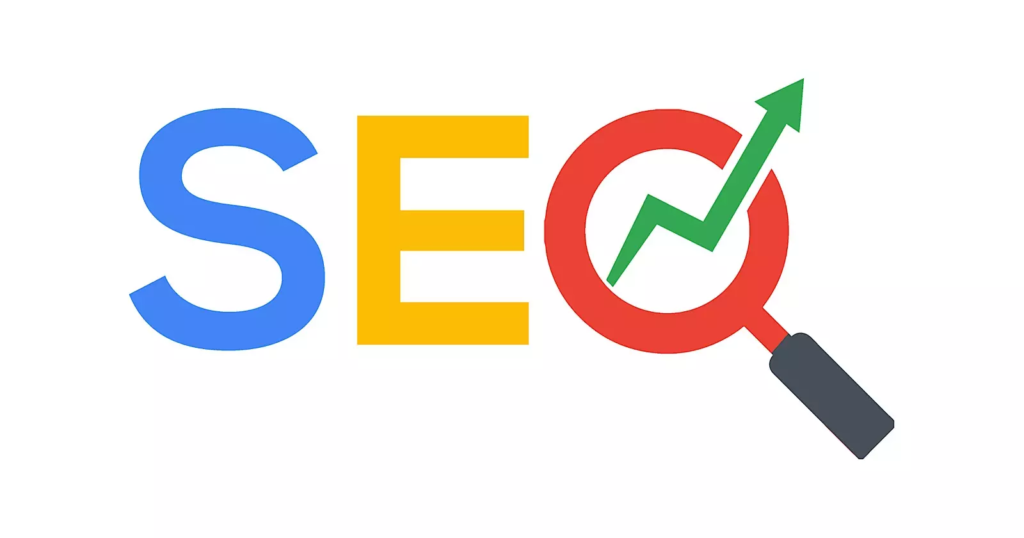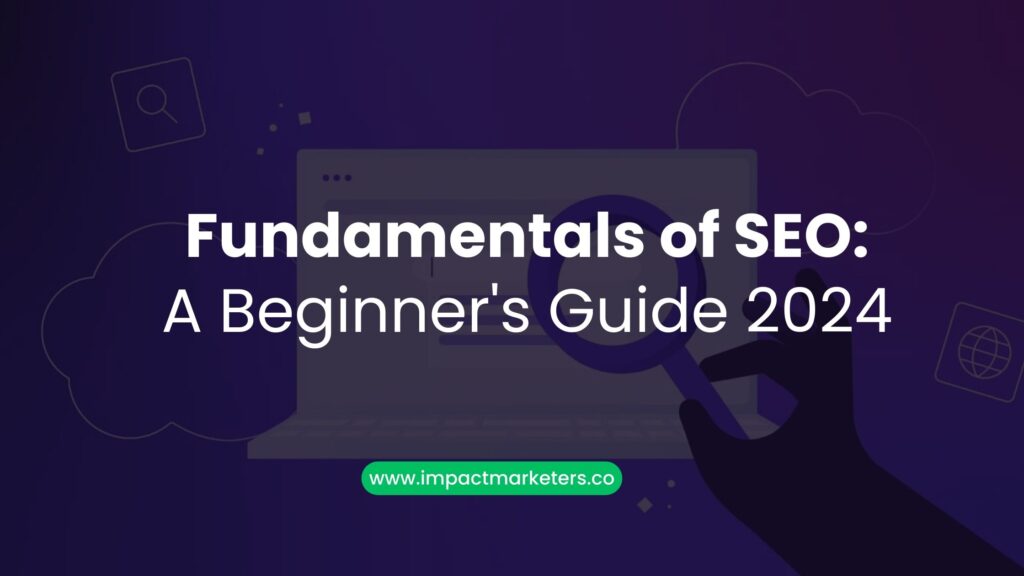Ever wonder why some websites seem to just appear at the top of search results? You can increase the visibility of your website and draw in more visitors. This could be done by learning the techniques of search engine optimization, or SEO!
With countless websites fighting for users’ attention, the online landscape is highly competitive in the current digital era. Since SEO directly affects a website’s visibility in search engine results, it is necessary to understand SEO. Websites can greatly boost their organic traffic by mastering SEO. This can improve their online visibility and even lead to business success.
With the help of this blog post, beginners will be able to better understand SEO principles. This will help them improve their online presence by optimizing their websites. Let’s explore SEO and find out what tactics can improve the performance of your website!
What Is SEO?

Search Engine Optimization (SEO) is a multifaceted practice that aims to enhance a website’s visibility. Targeting major search engines like Google, Bing, and Yahoo. SEO uses a range of methods and approaches to try and improve a website’s position in organic (free) search results. This involves optimizing different website elements to increase their functionality and appeal to search engines as well as users. SEO is all about getting your website in line with search engine algorithms. This is so that it ranks higher in search results. This includes optimizing the website’s content and structure.
Search engines act as digital gatekeepers. Continuously crawling the web, indexing content, and presenting relevant results to users based on their search queries. The goal of SEO strategies is to make sure that the content, design, and other components of a website comply with search engine algorithms. For the website to be more visible and accessible to users who are actively looking for information or solutions related to the offerings on the website, this alignment is important.
There is a difference between organic and paid search results in the world of search engine results. Paid results, like ads, are prominently displayed at the top or side of search pages. Whereas organic results appear naturally based on their relevance to the query. Optimizing a website for organic rankings is the main goal of SEO. This highlights the importance of user experience, quality, and relevance to increase a website’s visibility and credibility in search engine results.
Why SEO Matters
Websites and businesses depend heavily on SEO in the vast digital landscape. Let’s examine why:
Visibility
Consider your website to be a bustling city’s hidden gem. It gets lost in the depths of search engine results without effective SEO. Good SEO strategies increase the visibility of your website so that users can find it easily when searching for relevant keywords.
Traffic and Conversions
The goal of SEO is to draw in the right kind of visitors, not just any other ones. SEO-driven organic traffic tends to be more valuable and focused. Users are more likely to interact with, convert, and become devoted clients when they find your website through related searches.
Competitive Advantage
There is a lot of competition online. Companies fighting for customers want every edge possible. A strong SEO strategy can provide you an advantage over competitors, enabling you to take market share and become an authority in your industry.
SEO is an important aspect for websites and businesses looking to succeed in the digital age, not just a technical practice. SEO gives websites the ability to stand out in the crowded online marketplace and experience long-term growth and success by placing a high priority on visibility, targeted traffic, and competitive advantage.
Key SEO Components

Keywords
The fundamental components of SEO are keywords. Conducting in-depth keyword research entails figuring out the precise words and phrases that members of your target audience use when searching on search engines. By using this process, you can gain important insight into your customers’ intentions. This will effectively customize your content to meet their needs. Use free tools like Google Keyword Planner and SEMrush to find high-volume, low-competition keywords related to your niche to perform efficient keyword research. After you’ve determined which keywords to use, carefully insert them into the headings, body text, URLs, page titles, and meta descriptions of your website. But, it’s important to refrain from exaggerating keyword stuffing. This can have negative impacts on both the user experience and the credibility of your website.
On-Page Optimization
Creating attention-grabbing keyword-rich title tags for every page is one of the on-page elements that directly affect rankings. This is because Google shows these as links in search results. Given that meta descriptions have a big impact on click-through rates. it’s important to write engaging meta descriptions that summarize the content of the page. In addition, since search engines examine page structure. It is essential to arrange content in a readable, comprehensible manner using headings like H1–H6. Furthermore, creating excellent, user-focused pages that fulfil search engine searches and organically include keywords without stuffing them is essential for both on-page optimization and overall SEO success.
Off-Page Optimization
Obtaining links from credible, authoritative websites through outreach and high-quality content is one off-site activity that still has an impact on SEO. This is because it increases site authority. By posting content on social media that is worthy of sharing, you can engage communities, signal popularity, and improve search engine optimization. Furthermore, a strong online presence and brand that have grown over time increase credibility, which is reflected in domain authority.
To fully utilize SEO, both on-page and off-page optimization are essential. I hope these suggestions gave you a useful overview of the essential elements and recommended procedures.
Best SEO Practices and Strategies
Content Quality:
High-quality content is essential for attracting and keeping users. Any digital strategy should be built around valuable, friendly content. This entails producing unique, educational, and thoroughly researched content that speaks to the needs and preferences of the intended audience. Multimedia components like pictures, videos, and infographics can also improve user experience overall. This can increase the sharing and engagement of the content.
User Experience:
It is impossible to overemphasize how important site navigation, structure, and mobile friendliness are to user experience. By making it simple for users to locate the information they need, a well-structured website and easy-to-use navigation increase user satisfaction. Additionally, since more and more people visit websites from mobile devices, making sure they are responsive to mobile devices is important. Improved accessibility and usability from a mobile-friendly design result in increased engagement and decreased bounce rates.
Link Building:
Developing an online presence that is credible and strong requires using ethical link-building techniques. This entails reaching out to relevant and authoritative websites and creating content while building relationships to obtain backlinks. Choosing quality over quantity and abstaining from deceptive link-building strategies that go against search engine regulations is important. In addition, a sustainable and moral method of link building is natural link acquisition. This can be done through the creation of useful content and the establishment of sincere relationships with other webmasters.
Local SEO:
Using local search optimization is a must for companies looking to attract clients in the area. It entails making the most of one’s internet presence to draw in local customers and increase foot traffic to physical locations. This entails setting up and refining Google My Business accounts, getting local citations, monitoring online reviews, and ensuring that NAP (Name, Address, Phone number) data is consistent across different online channels. To increase visibility in local search results, local SEO includes focusing on location-specific keywords and producing content that is relevant to the area.
Measuring SEO Success
As you embark on your SEO journey, tracking progress is essential. Here’s how to measure success:

Analytics Tools:
Google Analytics:
An effective tool for tracking website traffic, user activity, and conversions is Google Analytics. It highlights areas that need improvement and offers insights into how well various website pages perform. Signup for an account and add some piece of measurement JavaScript code on the website in order to set up Google Analytics. Pseudonymous data about user interactions with the website is collected by this code, enabling extensive data collection and analysis. Google Analytics can also be used together with other Google products like Google Ads and Google Search Console.
Google Search Console:
A useful tool for monitoring index coverage, search engine performance, and any problems affecting a website’s visibility is Google Search Console. By providing notifications for crawl errors and issues with mobile usability. It enables website owners to take care of issues that might affect their site’s search engine ranking. Additionally, by integrating Google Analytics with Google Search Console, users can learn more about the search terms that direct traffic to their website. This will help assess the success of their online marketing campaigns. This integration makes it possible to optimize user experience on websites and apps. This also help gain a more thorough understanding of campaign performance.
These tools, when used effectively, can provide valuable insights and data to optimize website performance, enhance user experience, and drive business growth.
Metrics to Monitor:
Organic Traffic:
Evaluating organic traffic is important for determining how successful SEO campaigns are. Better SEO performance is indicated by an increase in organic traffic. High-quality content that meets user needs, builds authority in the field, generates backlinks, and eventually increases conversions is essential. SEMrush and Google Analytics are two useful tools for tracking organic traffic. This provides insightful information about the origins and browsing patterns of organic visitors.
Keyword Rankings:
Understanding the impact of SEO efforts requires tracking the ranking of target keywords over time. Monitoring keyword rankings is made easier with the help of tools like SEMrush and Ahrefs. This offer useful information for content optimization and increased search visibility. Businesses can gain authority in their niche, acquire backlinks, and grow audience trust by concentrating on producing high-quality content that meets user needs. This will eventually increase conversions.
Bounce Rate:
A high bounce rate indicates that visitors might not be able to find what they’re looking for on a website. Improving user engagement and retention requires optimizing pages to lower bounce rates. Website owners can identify pages with high bounce rates. They can take action to improve user experience and content relevance by using tools such as Google Analytics, which offers insights into bounce rates.
Conversion Rate:
Determining the conversion rate is important in determining the number of visitors who are completing desired actions, like registering or buying something. The percentage of site visitors who convert can be tracked by setting up goals in Google Analytics. This gives valuable insights into how well-converting pages are at converting visitors into leads or customers.
Backlink Profile:
It is essential to keep an eye on the quantity and quality of backlinks pointing to a website in order to evaluate its search visibility and online authority. Website owners can evaluate the strength of their backlink profiles and spot areas for improvement with the help of tools like SEMrush and Ahrefs, which offer insights into backlink profiles.
These metrics, when monitored effectively, provide valuable insights into the performance of SEO efforts and help in making data-driven decisions to enhance website visibility and user engagement.
Continuous Improvement:
SEO is a field that requires constant improvement because the environment is constantly changing. It is important to regularly review strategies, modify tactics, and keep up with industry trends because algorithms constantly change, user behaviour is changing, and competitors are becoming more and more adaptable. Businesses can successfully optimize their online presence and maintain their competitive edge in the digital field by being alert and responsive to these dynamic elements.
Conclusion
We’ve broken down the complexity of Search Engine Optimization (SEO) and outlined the most essential facts in this blog post. The importance of SEO in increasing website visibility and attracting relevant traffic has been emphasized, along with the differences between organic and paid search results, the complex nature of keyword research, on-page optimization, and off-page strategies, and the necessity of tracking key performance indicators (KPIs) like organic traffic, keyword rankings, and conversion rates. Understanding that SEO is a continuous process that calls for constant strategy adaptation and improvement is essential if you want to maintain success in the always-changing digital market.
Do you need help with your Search Engine Marketing? Check out our Search Engine Marketing Service.







Pingback: Social Media and SEO: A Winning Combination for Online Visibility - Impact Marketers